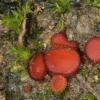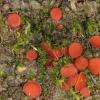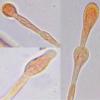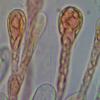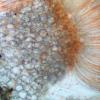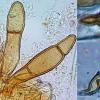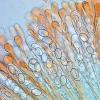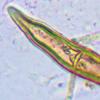
09-01-2026 10:08
 Blasco Rafael
Blasco Rafael
Hola, en el mismo habitat que la anteriorRetamaDia

08-01-2026 21:22
 Blasco Rafael
Blasco Rafael
Hola, He recogido esta muestra de Orbilia sobre Re

07-01-2026 10:24
 Danny Newman
Danny Newman
Pezicula sp. on indet. hardwood Appalachian Highl

07-01-2026 22:22
 Danny Newman
Danny Newman
Tatraea sp. on indet. hardwood The Swag, Great Sm

07-01-2026 17:29
 Marc Detollenaere
Marc Detollenaere
Dear Forum,On a barkless Populus I found some smal

10-11-2021 17:33
 Riet van Oosten
Riet van Oosten
Add-on topic http://www.ascofrance.com/forum/7059

07-01-2026 10:05
 Danny Newman
Danny Newman
cf. Chaetospermum on XylariaCosby Campground, Grea

02-01-2026 17:43
MARICEL PATINOHi there, although I couldn't see the fruitbody, I

04-01-2026 17:45
 Stephen Martin Mifsud
Stephen Martin Mifsud
I was happy to find these orange asmocyetes which
 Hello,
Hello,I have been struggling to identify this Cheilymenia (I suppose it is Cheilymenia at least :-))
Description: Apothecia orange-red with outer surface dotted with hairs, old ones often almost bald, size up to 2,2 mm.
Microscopical description: Hymenium about 230 – 260 µm thick. Hypothecium indisctincly differentiated. Excipulum seems differentiated to me as medullary layer is composed of smaller cells than those in outer excipulum, and also some inflated hyphae. Outer excipulum consists of globose, elipsoid to angular thin walled cells that are quite strongly cyanophilous.
Asci cylindric, 180 – 240 x 12,5 – 16 µm, with usually 4,6 or 8 ascospores (rarely 2), others are aborted. Some of aborted ascospores are subglobose. Ascospores are uniseriate, elipsoid, 14,15 – 16,65 x 8,25 – 9,95 µm, Q = 1,69, seem almost smooth under light microscope to me when stained in tryptanblue or cotton blue in lactic acid without heating.
Paraphyses are septate, with variable shape, mostly with enlarged apex (8-11 µm), often with some moniliform parts, sometimes branched (mostly below, rarely above), containing orange substances.
There are light brown thick walled root germs on the margin. Lateral hairs are short (up to 250 µm), truncate or attenuate, mostly simple, sometimes bifurcate or rarely 3furcate, thick walled, with subacuminate to acumanite apex, sometimes lanceollate, light brown, apex sometimes hyaline.
Habitat and collection: on soil, but maybe mixed with dung, late autumn, elevation 525m, Czech Republic
Thank you in advance for your help
Honza
to me it looks rather like a Melastiza (Aleuria s. l.), particularily the hairs. The spores are perhaps not quite mature yet.
Regards
Till

thank you for your prompt reply. Melastiza should have rounded apex of hairs only (or not?). Here lateral hairs are pointed (see photo) and longer than those short obtuse ones.
I considered ascospores to be mature as at they posses a yellow refractive content when stained in trypanblue or cotton blue in lactic acid. Immature spores lacked the yellow contained and stained completely blue...
Honza

It's probably Scutellinia minutella. I have a work on this species on course.
Could you send me some apothecia ?
Beñat

thank you for your answer. I wrongly supposed it to be Cheilymenia, section Pseudoscutellinae ...
I can send you some... Please contact me by email to arrange it.
Honza

I have study your sending.
It's S. minutella. I have sent you a private mail.
We have a study on course with a publication (during this new year 2015) with René Dougoud. Please be patient to have all information on this species.
In fact, it seems to be rare but not ! We suspect that it's just a problem of "rare" prospection and edaphical and ecological conditions.
For example, here, in Pyrenees, this species in more common than S. barlae, which is common if you have calcareous soils. It's not the case here...
Thanks again for sending,
Please be patient,
Beñat

